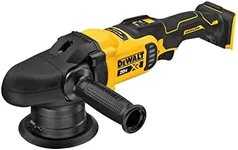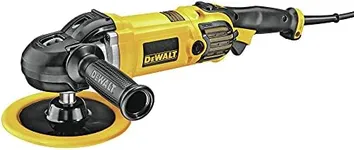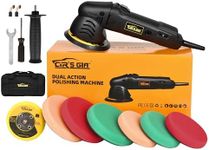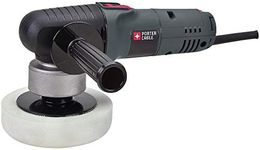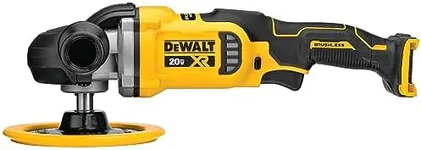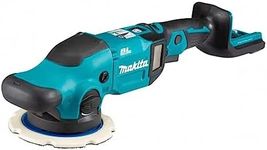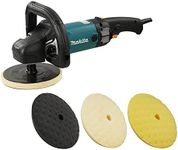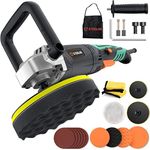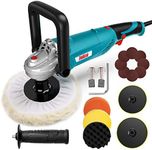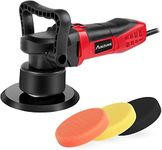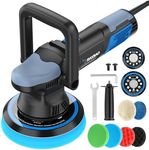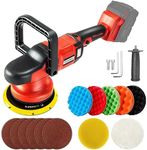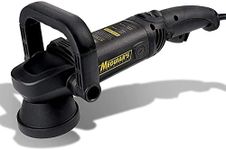Buying Guide for the Best Car Polisher Buffers
Choosing the right car polisher buffer can make a big difference in how easy and effective your car detailing process is. The right tool will help you achieve a smooth, shiny finish without damaging your car’s paint. When shopping for a car polisher buffer, it’s important to understand the key features and how they relate to your needs, whether you’re a beginner or an experienced detailer. By focusing on the main specifications, you can find a buffer that matches your skill level, the type of work you want to do, and the results you expect.Type (Rotary vs. Dual Action)The type of car polisher buffer refers to how the machine moves the pad. Rotary polishers spin in a single circular motion, while dual action (DA) polishers move in both a circular and an oscillating pattern. Rotary polishers are more powerful and can remove deeper scratches, but they require more skill and can damage paint if used incorrectly. Dual action polishers are safer for beginners and are less likely to cause swirl marks or burn the paint. If you’re new to polishing or want a safer, more forgiving tool, a dual action polisher is usually the best choice. If you have experience and need to tackle heavy defects, a rotary might be suitable.
Speed Settings (Variable Speed)Speed settings refer to how fast the pad spins or oscillates, usually measured in revolutions per minute (RPM) or oscillations per minute (OPM). Variable speed allows you to adjust the speed for different tasks, such as applying wax at a low speed or removing scratches at a higher speed. Lower speeds are gentler and better for finishing, while higher speeds are more aggressive for correction. Look for a buffer with a range of speed settings so you can match the speed to your task and skill level. Beginners often benefit from starting at lower speeds.
Pad SizePad size is the diameter of the polishing pad that attaches to the buffer, commonly ranging from 3 to 7 inches. Smaller pads (3-5 inches) are good for tight areas and detailed work, while larger pads (6-7 inches) cover more area quickly, making them better for large, flat surfaces. If you plan to work on small cars or want more control, choose a smaller pad size. For bigger vehicles or faster work, a larger pad may be more efficient.
Power (Motor Wattage)Power is usually measured in watts and indicates how strong the motor is. Higher wattage means the buffer can maintain speed under pressure and handle tougher jobs. Lower wattage models are lighter and easier to handle but may slow down if you press too hard. If you’re doing light polishing or are new to buffing, a lower wattage buffer is easier to control. For heavy correction or frequent use, a higher wattage model will be more durable and effective.
Weight and ErgonomicsWeight and ergonomics refer to how heavy the buffer is and how comfortable it is to hold and use. Lighter buffers are easier to maneuver, especially for long periods, but may vibrate more. Heavier buffers can be tiring but sometimes feel more stable. Ergonomic handles and balanced designs reduce fatigue and make the tool easier to control. If you plan to use the buffer for extended sessions or have limited strength, look for a lighter, well-designed model.
Corded vs. CordlessCorded buffers plug into an outlet and provide consistent power, making them suitable for long jobs. Cordless buffers run on batteries, offering more mobility and convenience, especially if you don’t have easy access to power. However, cordless models may have less power and limited run time. If you need to work in different locations or value portability, a cordless buffer is a good choice. For uninterrupted, heavy-duty work, a corded model is more reliable.
